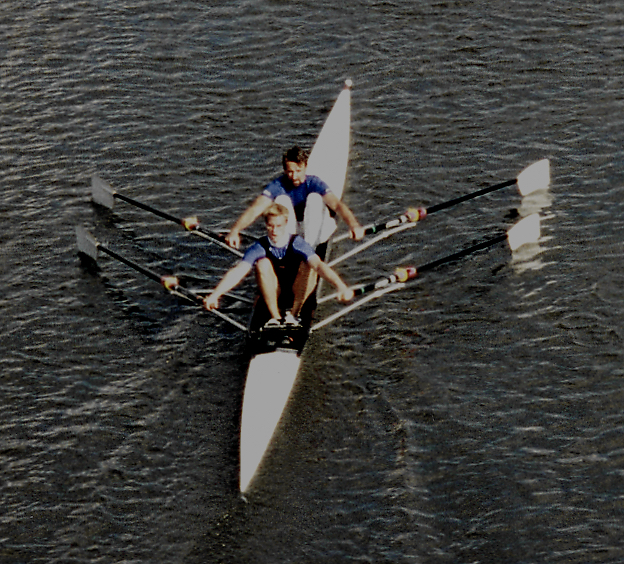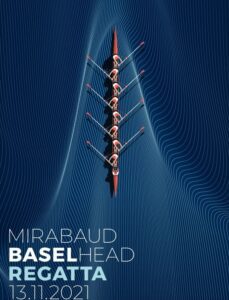Of late, I have noticed we are coaching non-elite crews to row differently than elite crews which shows little faith in the broader rower’s abilities. Is it that we believe crews can’t learn to row well, or are coaches not taking responsibility for teaching crews the added complexity?


One example: Should we slow down into front-stops or allow the boat to accelerate under us on the recovery?
The vast majority of Elite rowers at world championships and Olympics accelerate into the front-stops, however, most coaches non-elites are coaching crews to decelerate into front-stops. To make matters worse, elite coaches often state that non-elites should not attempt this because they will create even worse boat check because of late placement of the blade. This would be like coaching skiiers to always ski pizza pie style and never teaching them parallel skiing! Let’s not give up on our crews. Let’s instead come up with drills and verbal concepts that help all rowers achieve the right sequence at the catch.
Most rowers are afraid to place their blade earlier because they worry about splashing rowers behind them, or act as a brake on the boat. Crews need to learn to relax their elbows so that when the blade touches the water there can be some give if you go in too early.
Here is one of the drills we use to practice this feeling of letting the blades lock and move at the speed of the boat. It is an exaggeration of what happens during a normal stroke but gives the rower an opportunity to overcome their fear of early placement and feel when the blade is fully submersed and locked.
Step 1:
Come up to 6/8th slide (so just before front-stops). Square your blade and then let it drop in the water by un-weighting the hands. The rower should repeat dropping in the blade and tapping it out while staying stationary on the slide until they can comfortably do this ten times. If there is too much tension because of poor balance you can start practicing this at 1/2 slide instead of at front-stops. After the rower feels comfortable with this they move to step 2
Step 2:
The next step is for the rower to drop the blade in the water at 7/8ths slide and once the blade is in the water to then go up to front-stops by compressing the legs and keeping the body angle the same. They will notice that to do this without resisting the movement of the boat/pushing back on the water they will have to relax their arms and even let them bend a little, once they have come to the front stops they will just tap the blade out and start over. Once they can do repeat it comfortably 10-20 times they can move onto step 3.
Step 3:
The next step which is to start at 3/4 slide and simultaneously move up the slide and let go of your already squared blades. The blades should enter the water at about 7/8 slide – and you travel up the last 1/8 as you did in the prior drill phase. Once they are comfortable doing this, they move to the last phase of the drill.
Step 4:
Once they come to front-stops they apply pressure to move the boat. This should initially be done at light pressure with the power and rating slowly brought up as this requires a lot of coordination and concentration the faster the boat is moving.
About Steven:
I have been sculling for over twenty years now and live near Philadelphia in the U.S. I started sculling at age 13 in London, first at Dulwich College and then Westminster School. I was then recruited to row for Princeton University’s lightweight men’s team in the U.S. and have stayed here ever since. When I was at Dulwich we all had to be junior members of Thames Rowing Club which ended up being the best thing because that meant we could also go rowing outside of organized school practices. This is when my friends and I would experiment with creating our own drills and games to improve. I was lucky to then have Peter Haining as a mentor and I still remember a lot of things he said all those years ago while he was in his prime (1990s). I am a lightweight so my focus has always been on technique and efficiency. There is never a stroke when I am not thinking of some improvement – that is why I love the sport!
Photo caption: Peter Haining and the author, Steven Aller, at the catch in 1999








This Post Has 7 Comments
Thank you Rebecca (and Steven!). I have been trying to teach myself to do this and had invented much the same drill. Am so very pleased and relieved to receive this guidance!
Often it is because the coaches don’t know any better. Where I row, so many coaches have come up through the ranks of just repeating what they were taught and have never fully understood the rowing stroke to question whether or not what they were taught makes sense. Slowing down the last quarter of the slide is something many people were taught and so they repeat it. I’ve even seen prior elite rowers coach it because they think it is correct. The same can be said about quick hands. Almost know elite boat does this anymore yet it is taught ad nauseum to youth sometimes to such a degree that it becomes the entire focus of their training. One only has to ask, as does Drew Ginn: “does it make the boat go faster?”
A repeat of my comment on the website: Often it is because the coaches don’t know any better. Where I row, so many coaches have come up through the ranks of just repeating what they were taught and have never fully understood the rowing stroke to question whether or not what they were taught makes sense. Slowing down the last quarter of the slide is something many people were taught and so they repeat it. I’ve even seen prior elite rowers coach it because they think it is correct. The same can be said about quick hands. Almost know elite boat does this anymore yet it is taught ad nauseum to youth sometimes to such a degree that it becomes the entire focus of their training. One only has to ask, as does Drew Ginn: “does it make the boat go faster?”
Thanks for the comments
I agree with virtually everything Steven says with the exception of the implication in Step 3 that the blade is squared at 3/4 slide. From what I have read, this is too early and slows the boat (because of the aerodynamic resistance of the squared blade.).
Now, many coaches coach squaring early on the mistaken impression that it makes it easier to take the catch. From the beginning, I squared up just at the catch, and my coaches tried to get me to square up early. Their reason was that it made taking the catch easier. For me, it upset my natural rhythm and I always had trouble squaring up early. Much to my relief, when I started rowing the pair with a world cup medalist, I found we squared up simultaneously just before the catch, so I never had any problems.
The key is using the hamstrings to pull forward into the catch. When I concentrated on keeping negative foot pressure on the foot stretcher all the way into the catch, the CrewNerd smoothness readings improved. I think this is an indirect affirmation that pulling all the way into the catch produces faster rowing.
As I say, rowing is a binary sport. When the oar is in the water, apply pressure on the foot stretcher. When the oar is out of the water, pull on the foot stretcher.
My intention to contribute to this discussion sooner was thwarted by my attendance at a Sports’ Science and Medicine Conference organised in Marlow by British Rowing. Although this topic was not, unfortunately, the subject of a presentation per se, it seemed that a number of people – delegates and researchers alike – had opinions about it when I raised the subject.
I would make two points, briefly (or alternatively offer a 20min presentation, if anyone prefers!).
Firstly, the language is wrong. No-one “accelerates up the slide”, as anyone using a RowPerfect will attest. (Thanks Becky!) What the athlete is doing is drawing the boat positively underneath them. This isn’t a pedantic distinction but a coaching point of significant importance as it determines the athletes’ perception, interpretation and application of that movement.
Secondly, coaches of novices and early development rowers may indeed be teaching a different interpretation of the basic rowing technique but the principles underlying this should not be in conflict with progressing seamlessly into an elite style of rowing.
Essentially, the blade needs to enter the water at front stops before the drive is initiated. How many coaches insist on this as a first principle for beginners? “Remain stationary at frontstops until you feel the spoon in the water.” Any initial delay (hanging) will, in due time, reduce to insignificance as accuracy and timing improve. And, more importantly, your beginners will ALWAYS row long!! This skill will lead to the ability to recover at higher slide speeds without compromising length at the front end. More importantly, it will lead to athletes who can decelerate from speed without bouncing off the frontstops and losing length.
Note that whatever the recovery slide speed is, the placement of the spoon in the water will (should) take place when the seat isn’t moving. If this is done accurately (timely and precisely),any gain in boat speed during the recovery can be achieved without any stern check.
Anyone unconvinced by this proposition should go out in a double/quad and try having all but one person sitting the boat while the active sculler takes a modest stroke or two. Then, ensuring they rock over at back stops (to avoid any body bounce at frontstops), they should draw the boat under them as positively as they can before stopping at frontstops with the blade hanging over the water. The balancers will feel the surge during the recovery slide but, unless you bounce back off front stops, there will be no stern check. Extra speed at no cost (except for the extra use of the hamstrings)!
This is totally explicable to novices. They just have to be patient enough to wait until their skills can accommodate it 😉
The FACT is that all rowers both accelerate(increase speed) in the recovery, and then decelerate as they near the catch.
The boat is fastest midway in the recovery, and slowest just after the catch. This is mainly due to the movements of you (heavy) and the boat (light). To reduce the ill effects of this pulsing you should;
1. Have a 1:1 work :recovery ratio, 26+ spm, and about 10″ lay forward and back..
2. Go into the catch with arms slightly bent. The blades stopping then draws the arms straight. When this happens square the blades and drop them in at full reach. The inevitable reversal of blade speed is taken by the arms rebounding.
3. Your torso makes a less jerky reversal.
A benefit of getting the blade in at furthest reach – at its greatest angle – is that it moves FORWARD as it rotates. During the work the blade will inevitably be pulled backwards in the water. If it can start by moving ahead of the entry point????? My blade leaves the water ahead of where it went in!
Yes! We base our techniques on those taught by our coaches. But????? Who pulls something while leaning forward(coached rowers). Why coach 2:1 in:out if experts do 1:1. Why coach straight back if experts use curved back (supported by medical opinion.) How can you accelerate into a stop at the catch? Why do weird drills? Better to learn something by doing IT!!!
And cut the blurb! Move the boat past the water rather than the water past the boat, I think, perhaps?
And protecting all this by calling it “correct” or “proper”.
Incidentally doing drills with some of the crew static will give a strange feel to the boat since the static boat now weighs much more than normal..
Visit “Youtube Rhecon Sculling” to see my style.
Have fun